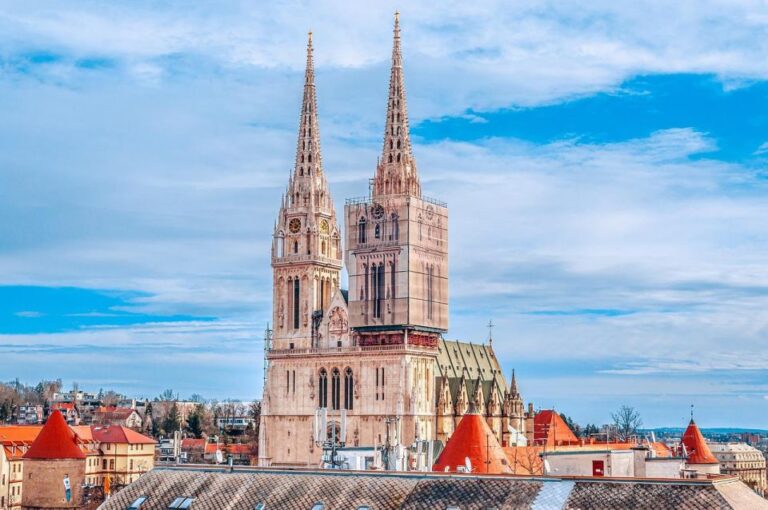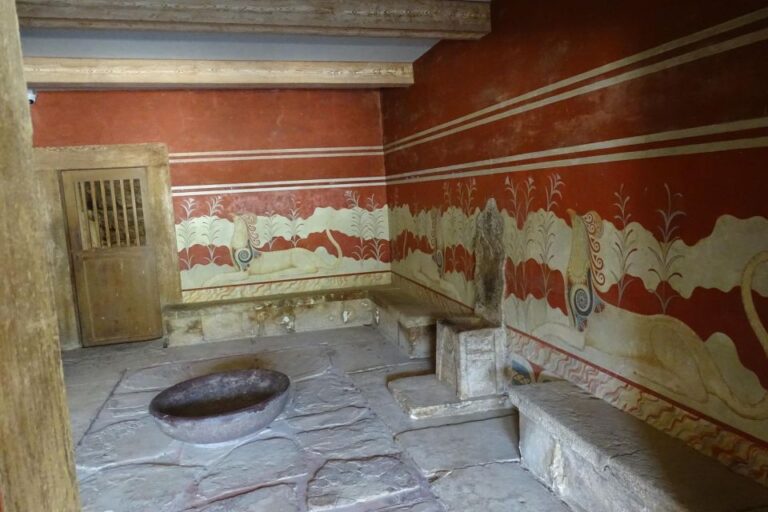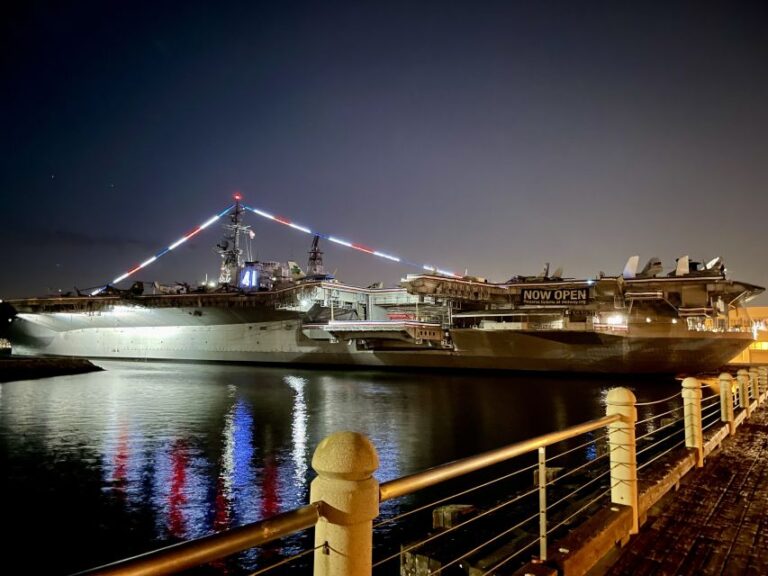Berlin’s Karl-Marx-Allee is a remarkable testament to the city’s complex history. This socialist boulevard, with its striking architecture, offers a window into the profound impact of Cold War ideology on the urban landscape. On this informative tour, visitors uncover the area’s tumultuous past, from the 1953 East German uprising to the oppressive surveillance tactics of the Stasi. Through engaging storytelling and insights into renowned films, the tour provides a vital understanding of this architectural legacy – one that continues to shape the city’s identity in profound ways.
Key Points

- The tour covers the grand socialist architecture and historical significance of Karl-Marx-Allee, a prominent boulevard in former East Berlin.
- Participants gain insights into the impact of Cold War ideology on the city’s urban planning and the repressive nature of the East German state.
- The tour highlights the 1953 uprising against socialist rule, which occurred along the boulevard, and the extensive Stasi surveillance that followed.
- Visitors explore filming locations featured in acclaimed movies like ‘The Lives of Others’ and ‘The Queen’s Gambit’ to understand the area’s complex legacy.
- Customer reviews praise the tour’s captivating storytelling, informative approach, and ability to enhance understanding of Berlin’s architectural and political complexities.
Tour Overview and Details

The tour of Karl-Marx-Allee costs from $21.78 per person and lasts around 2 hours, starting at the U Frankfurter Tor station on the street and ending at the U Strausberger Platz.
It’s available in English and German, and the tour is wheelchair accessible. You can cancel up to 24 hours in advance for a full refund. To secure your spot, you can reserve now and pay later.
The tour highlights the impact of Cold War ideology on Berlin’s architecture, the East German uprising of 1953, and the realities of surveillance and suppression by the Stasi police.
You’ll also visit filming locations of popular movies like ‘The Lives of Others’ and ‘The Queen’s Gambit’.
Experience Highlights

On this tour, visitors discover the impact of Cold War ideology on Berlin’s architecture as they admire the ambitious building project in former East Berlin.
The tour guides share insights into the East German uprising of 1953, which reflected the struggles of East Berliners living under the watchful eye of the Stasi police. Participants also uncover the realities of surveillance and suppression within this socialist state.
Plus, the tour visits filming locations of acclaimed movies like ‘The Lives of Others’ and ‘The Queen’s Gambit’, offering a glimpse into the cultural legacy of this unique neighborhood.
Throughout the experience, attendees gain a deeper understanding of the socialist legacy that shaped this iconic boulevard.
Historical Context
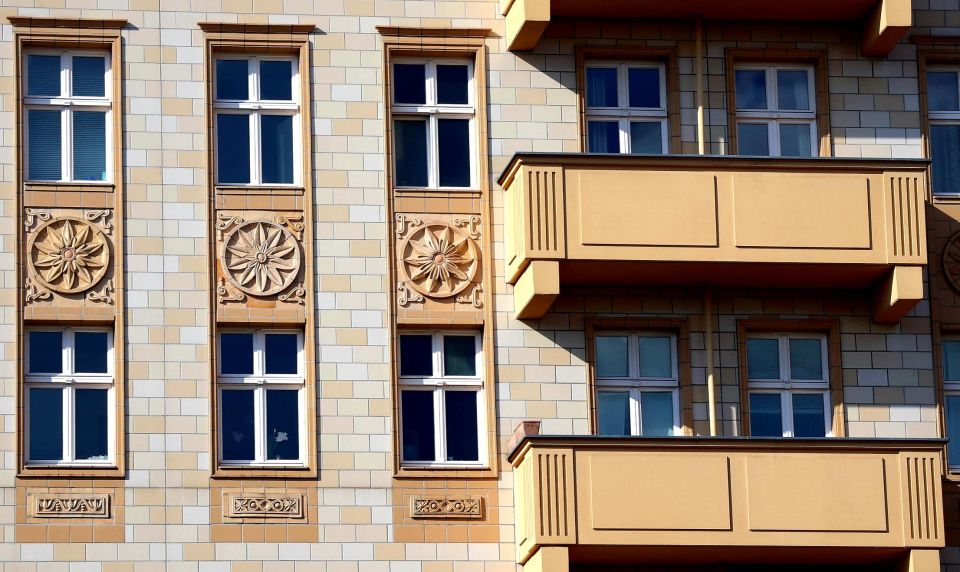
Karl-Marx-Allee stands as Germany’s first socialist street, showcasing grand housing blocks in socialist classicism style. Developed post-WWII as part of East Germany’s national reconstruction, it involved thousands of volunteers. The street played a role in the 1953 uprising against the socialist government, reflecting the struggles of East Berliners living under the watchful eye of the Stasi police. Initially, the area presented an image of affluence and ideal socialist living, concealing the realities of a surveillance state. After the fall of the Berlin Wall, the street faced neglect but has since gained attention amidst the city’s housing crisis.
| Event | Year |
|---|---|
| WWII | 1939-1945 |
| East Germany’s Reconstruction | Post-WWII |
| 1953 Uprising | 1953 |
| Fall of the Berlin Wall | 1989 |
Itinerary Details
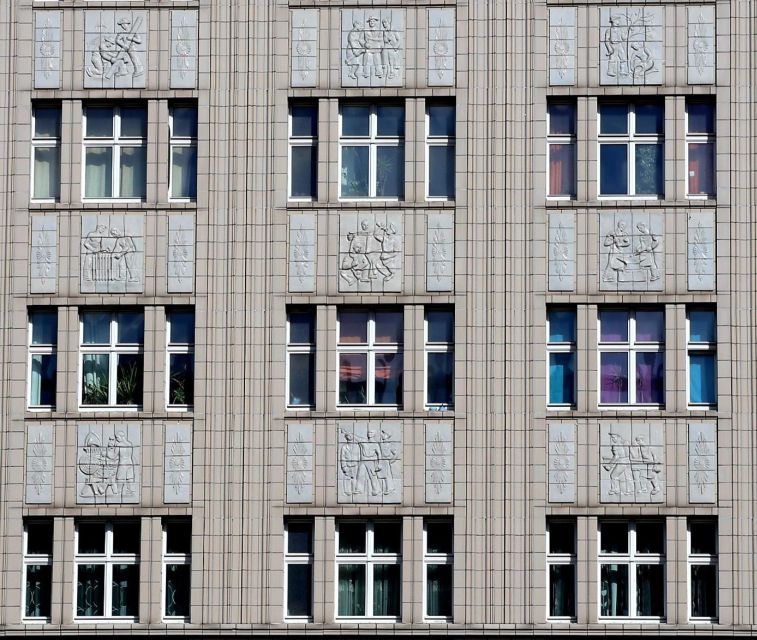
Guided tours of the historic neighborhood last around 1.5 hours, with itineraries subject to change based on availability of starting times.
Visitors meet the guide outside the Frankfurter Tor U-Bahn station, easily recognizable by the orange umbrella they carry.
The tour takes guests through the grand socialist architecture along Karl-Marx-Allee, delving into the complex history and struggles of East Berlin during the Cold War era.
Participants learn about the role this boulevard played in the 1953 uprising against the socialist government and uncover the realities of surveillance and suppression by the Stasi police.
The tour also highlights filming locations featured in acclaimed movies, providing a multifaceted exploration of this unique urban landscape.
Customer Reviews
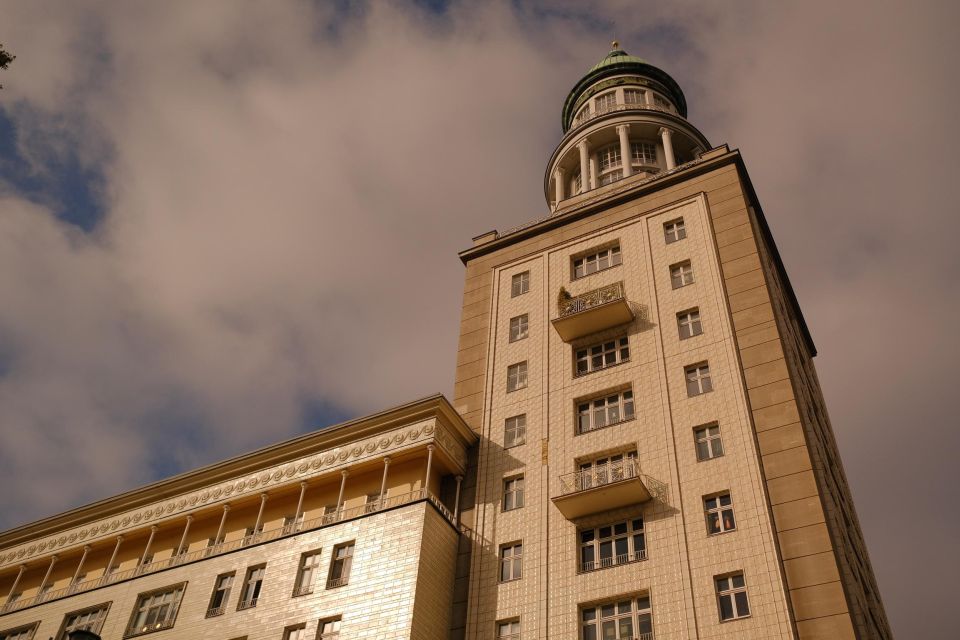
Consistently, reviewers praise the tour guide’s captivating storytelling and informative approach, which provides an intimate understanding of the socialist legacy in Berlin.
According to the 5-star reviews, the tour is well-structured and engaging, offering deep insights into the history and realities of the Karl-Marx-Allee neighborhood.
Visitors highlight the guide’s ability to bring the past to life, shedding light on the area’s role in the 1953 East German uprising and the surveillance tactics of the Stasi police.
The tour is described as a must-do experience for anyone interested in exploring the architectural and political complexities of former East Berlin, leaving a lasting impression on those who participate.
Architectural Impact of Cold War Ideology
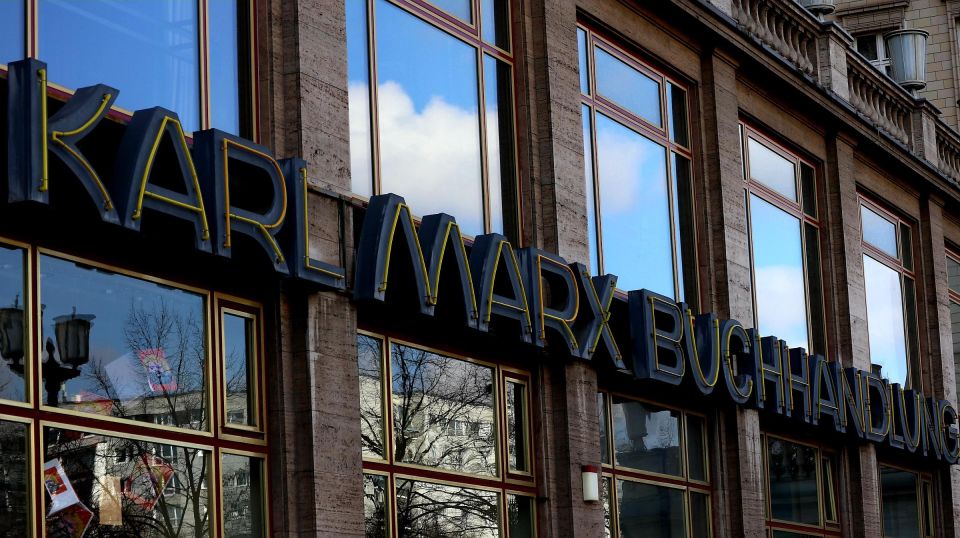
The grand housing blocks of socialist classicism that line Karl-Marx-Allee stand as a testament to the ideological currents that shaped East Berlin’s architectural landscape during the Cold War era.
Developed as part of East Germany’s post-war national reconstruction, this grand boulevard was designed to showcase the power and prosperity of the socialist state.
The buildings’ ornate facades, symmetrical designs, and monumental scale were intended to project an image of affluence and socialist living, concealing the realities of a surveillance state that suppressed individual freedoms.
This architectural legacy reflects the complex interplay between ideology, power, and urban planning that defined the divided city of Berlin during the decades of East-West conflict.
East German Uprising of 1953

Berlin: Tour of Karl-Marx-Allee, the Socialist Boulevard
The 1953 East German uprising was a significant event that reflected the struggles and discontent of the East Berliners living under the socialist government’s rule.
Sparked by increased work quotas and reduced rations, the protests quickly escalated into a nationwide revolt against the authoritarian regime, leading to a brutal crackdown by Soviet troops and the East German police force.
The street along Karl-Marx-Allee played a central role in the unrest, as protesters clashed with security forces in the area.
The failed uprising highlighted the repressive nature of the East German state and the deep divisions within the country, foreshadowing the eventual collapse of the communist system.
Surveillance and Suppression by the Stasi

Amidst the failed East German uprising, the Stasi, East Germany’s notorious secret police, intensified its surveillance and suppression tactics to maintain the socialist government’s grip on power.
The Stasi recruited a vast network of informants, monitoring the daily lives of citizens through phone taps, mail interception, and hidden cameras. They ruthlessly cracked down on any sign of dissent, arresting and interrogating those deemed threats to the regime.
This invasive presence instilled a climate of fear, as East Berliners never knew who might be watching or reporting their every move. The Stasi’s web of control exemplified the realities of life under the socialist system, concealed by the grand facades of Karl-Marx-Allee.
Frequently Asked Questions

Can I Purchase Souvenirs on the Tour?
The tour does not include opportunities to purchase souvenirs. It’s focused on providing an informative historical experience, rather than offering shopping options. Visitors can explore the area on their own after the tour if they wish to find souvenirs.
Is Photography Allowed During the Tour?
Yes, photography is generally allowed during the tour. Participants are welcome to capture photos throughout the experience, as long as they do not disrupt the group or impede the guide’s ability to provide the tour.
What Is the Dress Code for the Tour?
There is no formal dress code for the tour. Participants are advised to dress comfortably and appropriately for walking outdoors for 1.5 hours. Casual, weather-appropriate attire is recommended to ensure a pleasant and enjoyable experience.
Are There Any Bathroom Breaks During the Tour?
The tour doesn’t specifically mention any scheduled bathroom breaks. However, as it’s a 2-hour walking tour, the guide likely allows occasional stops to use restroom facilities along the route. Guests can inquire about this with the tour operator beforehand.
Can the Tour Guide Speak Other Languages?
The tour guide can speak English and German. According to the tour overview, the tour is available in both English and German, so visitors can choose the language they’re most comfortable with during the guided experience.
Recap
The ‘Tour of Karl-Marx-Allee, the Socialist Boulevard’ offers an insightful exploration of Berlin’s complex history.
Participants explore the area’s striking socialist architecture, uncover the impact of Cold War ideology, and learn about the 1953 East German uprising and the oppressive Stasi surveillance tactics.
This informative tour provides a vital understanding of the region’s architectural legacy and the profound influence of socialist principles during a pivotal era.

